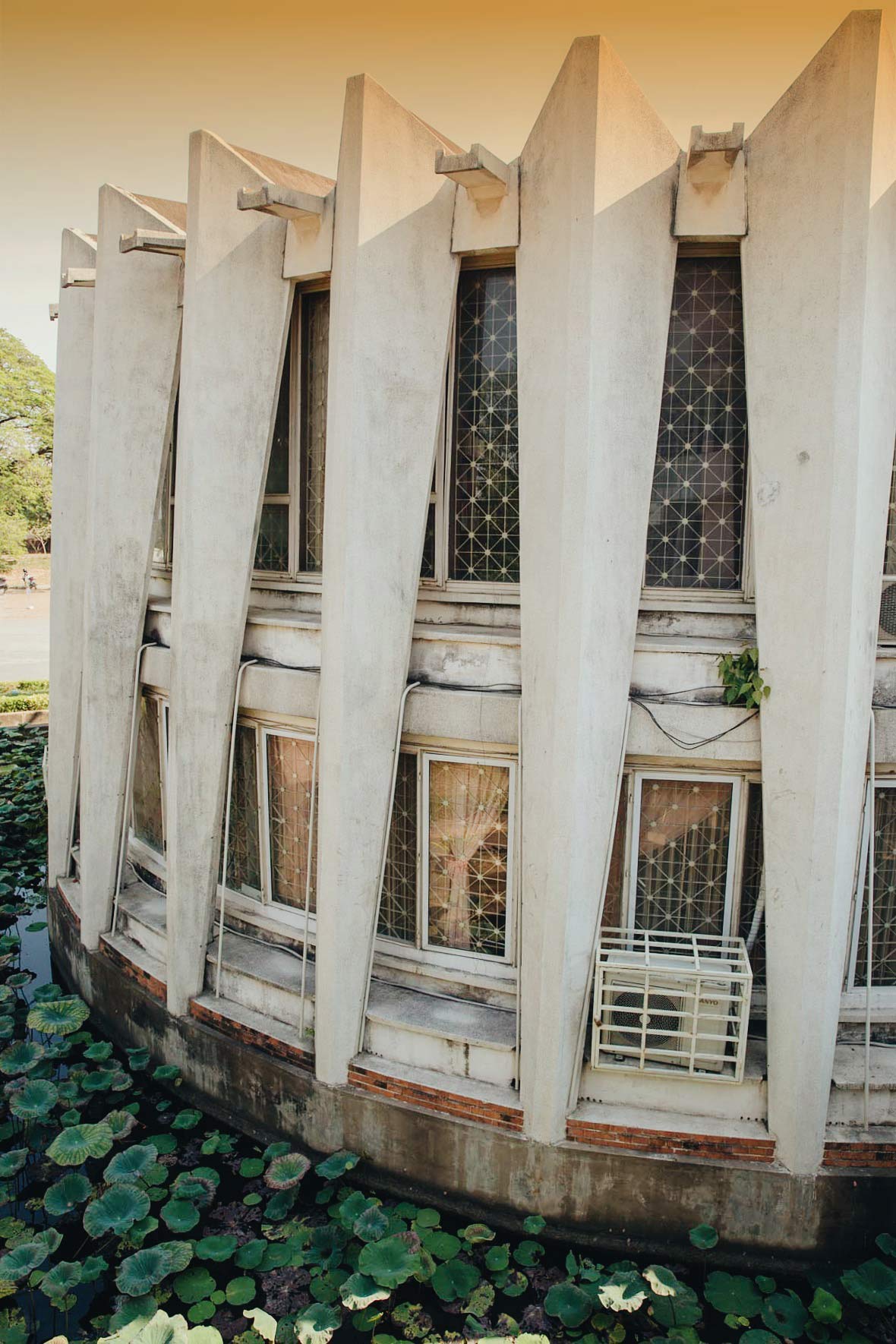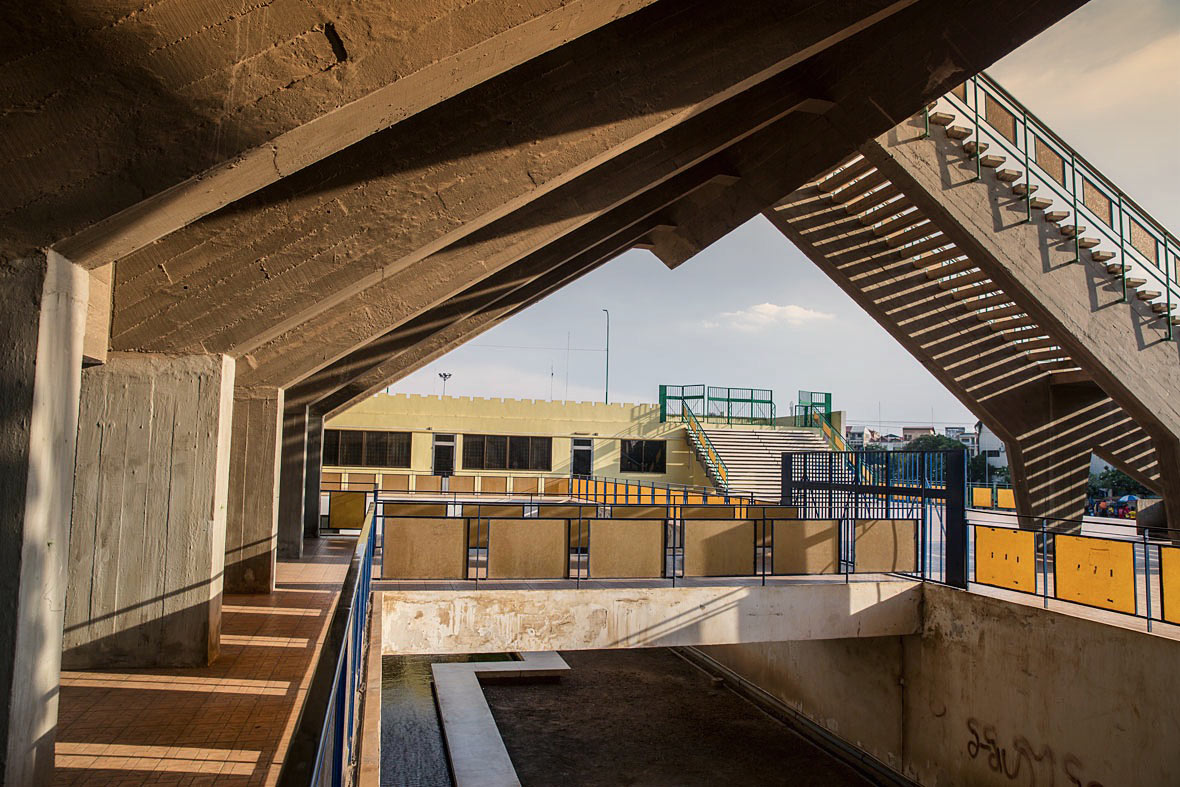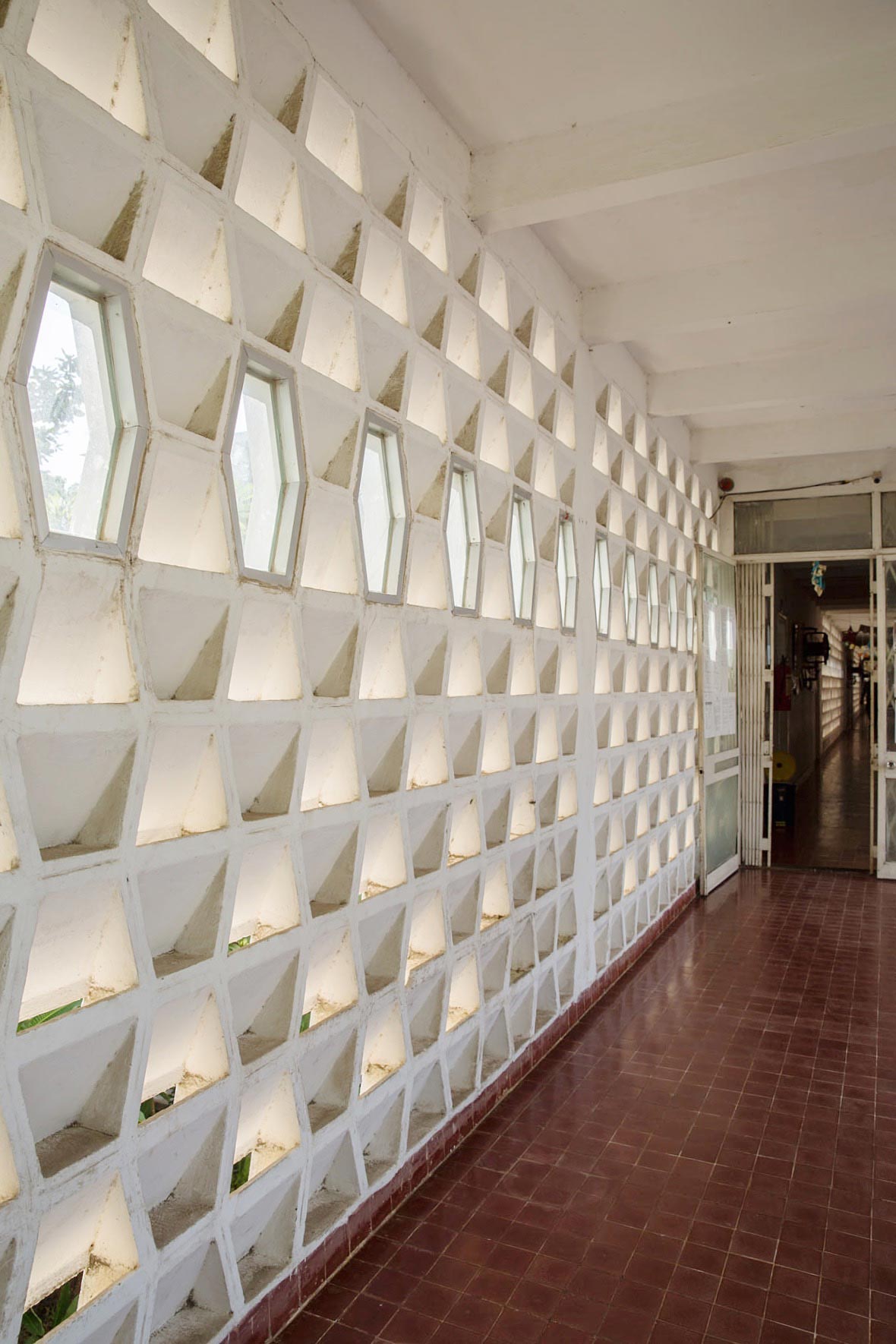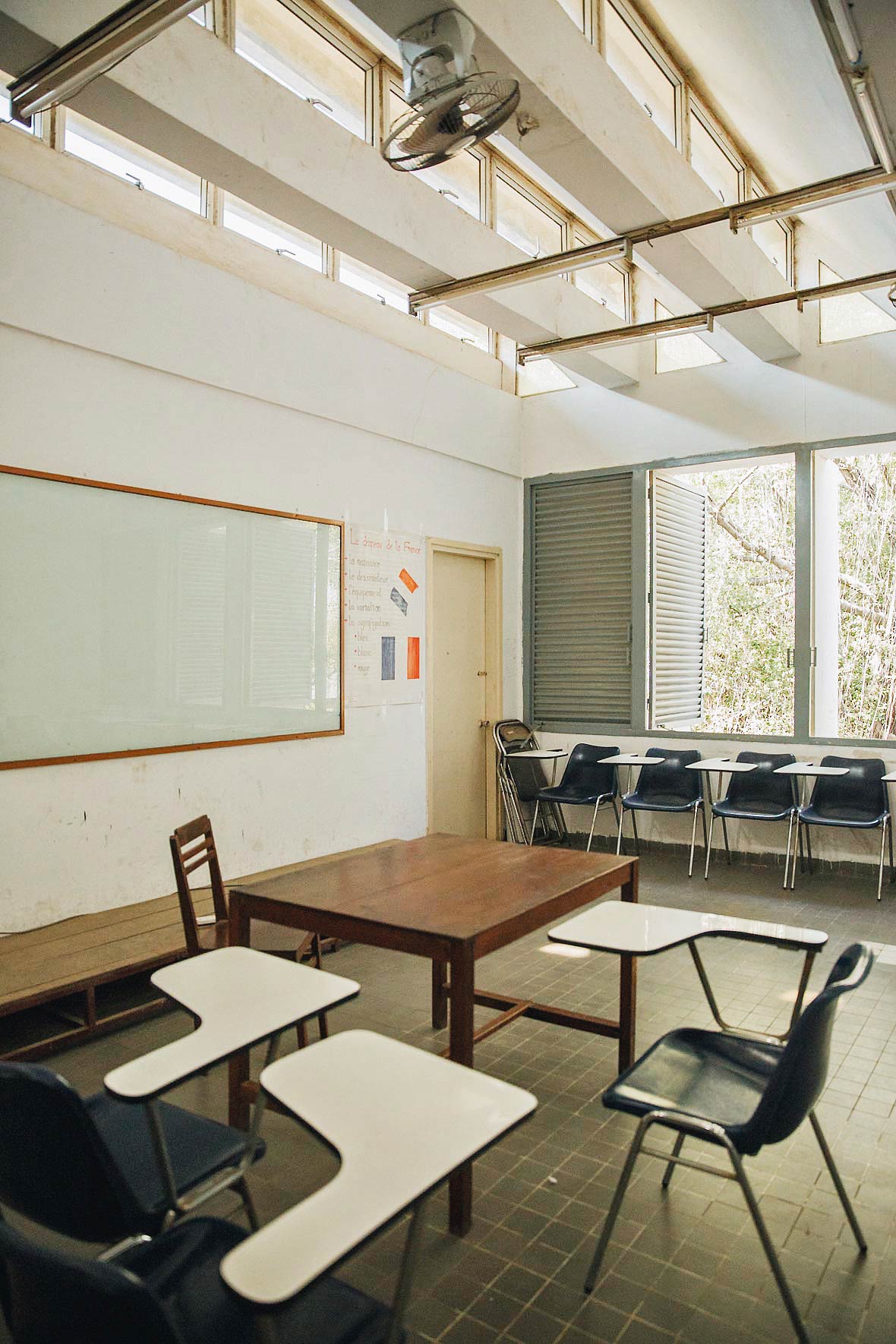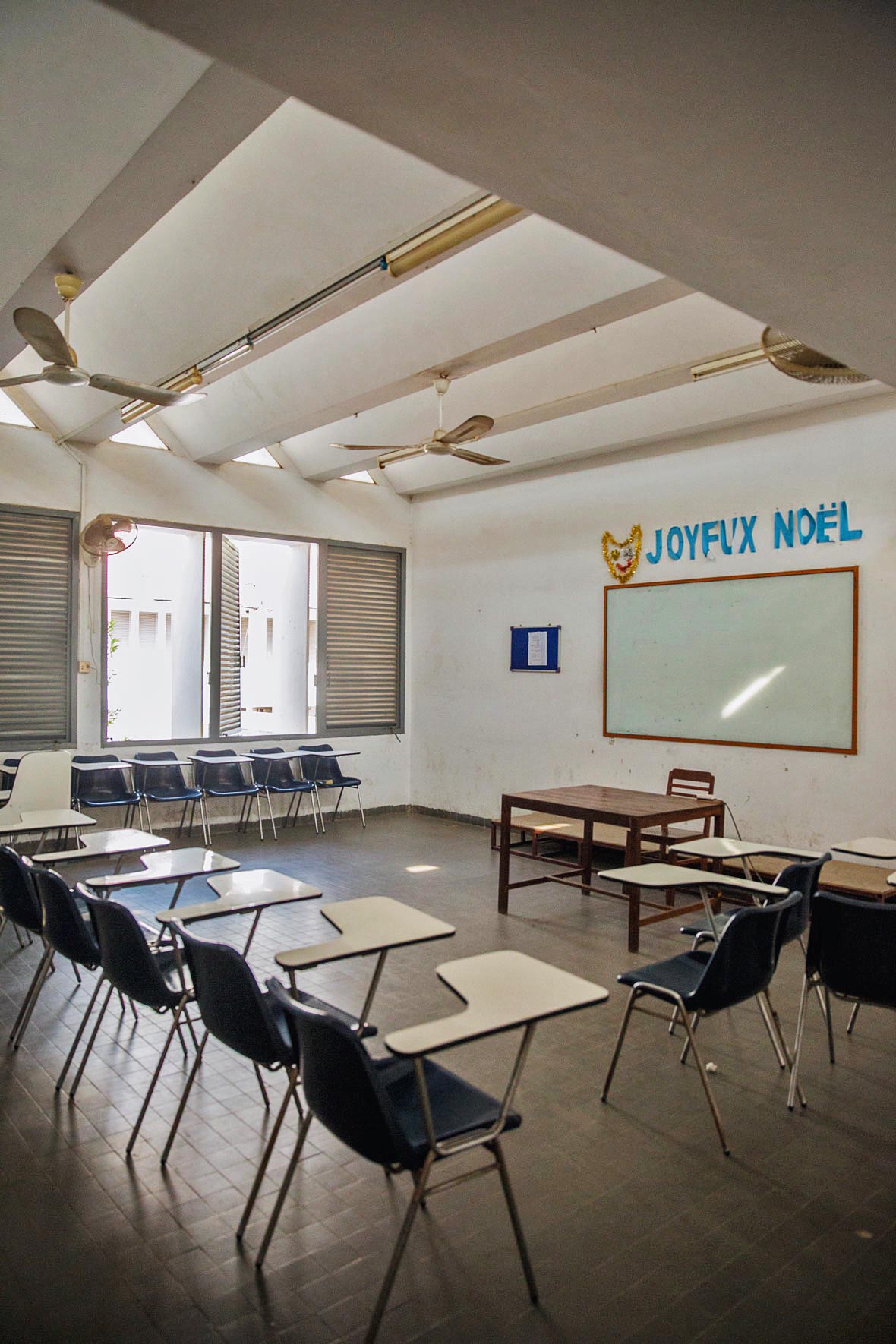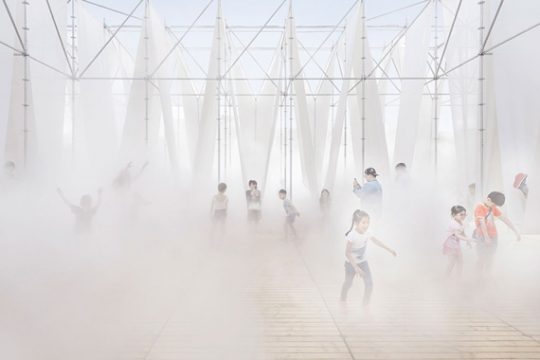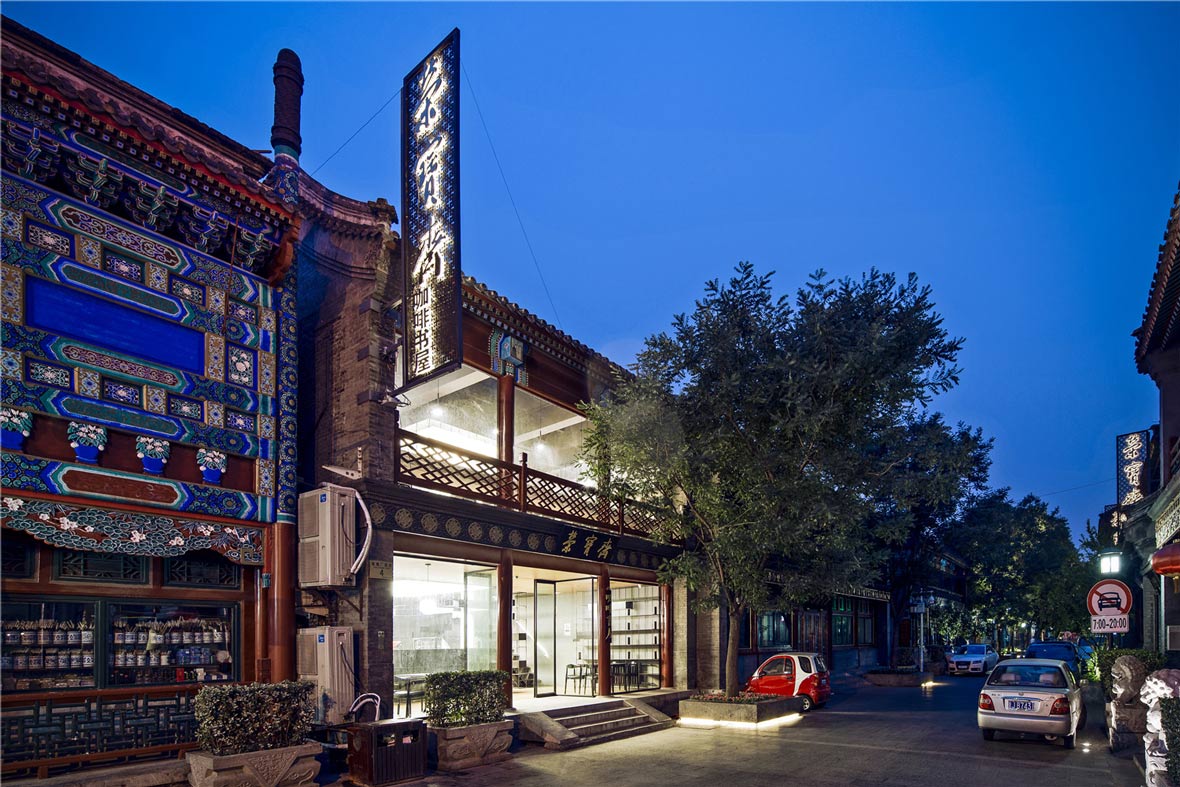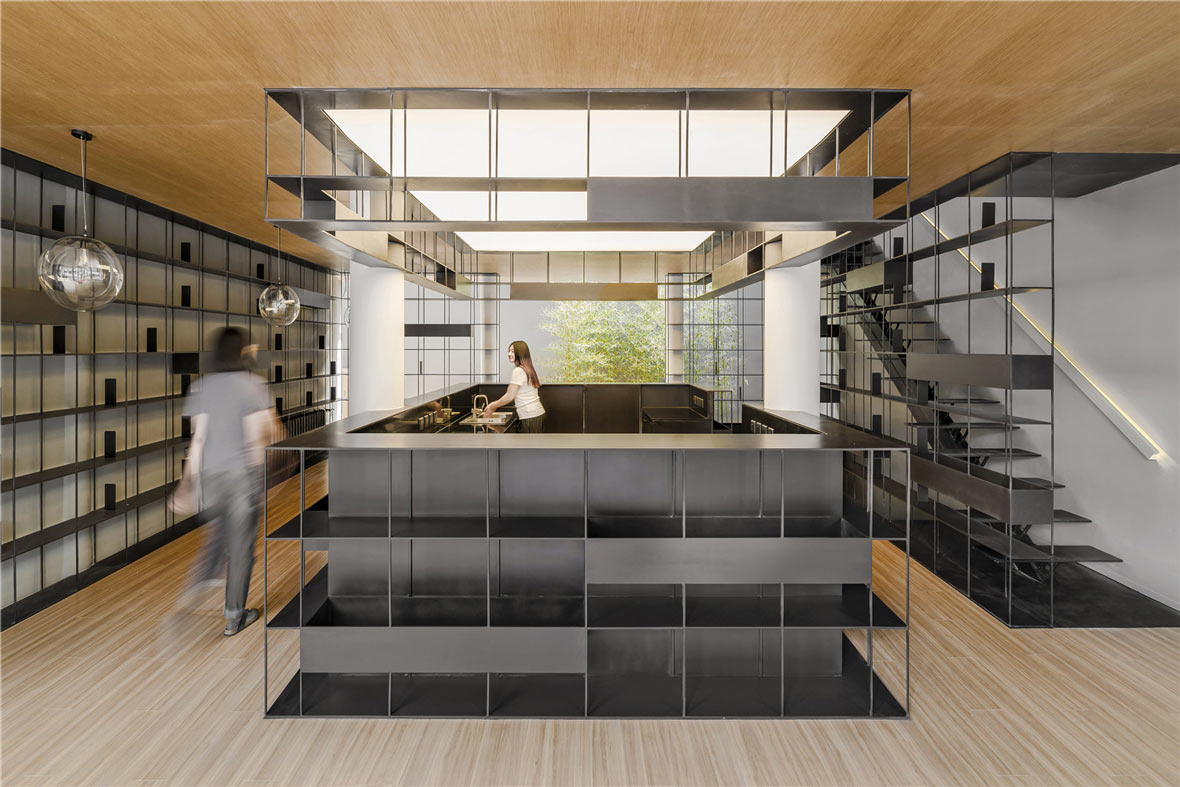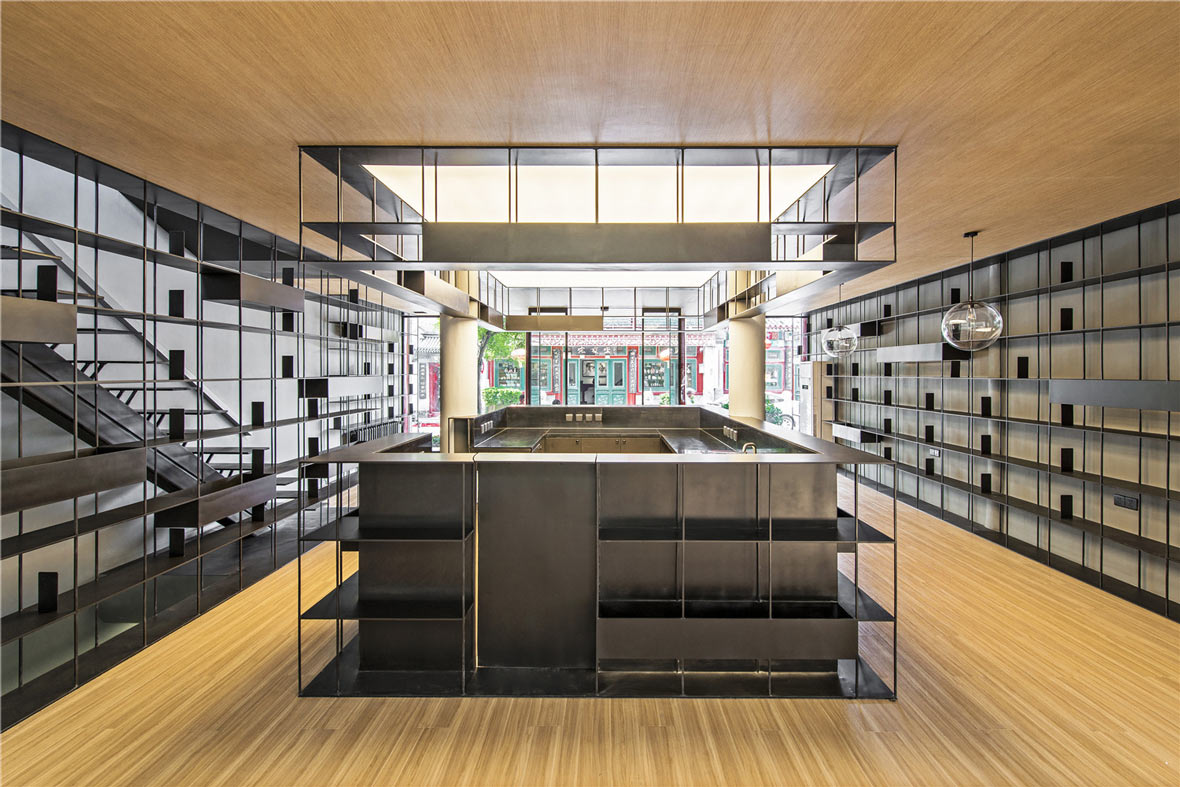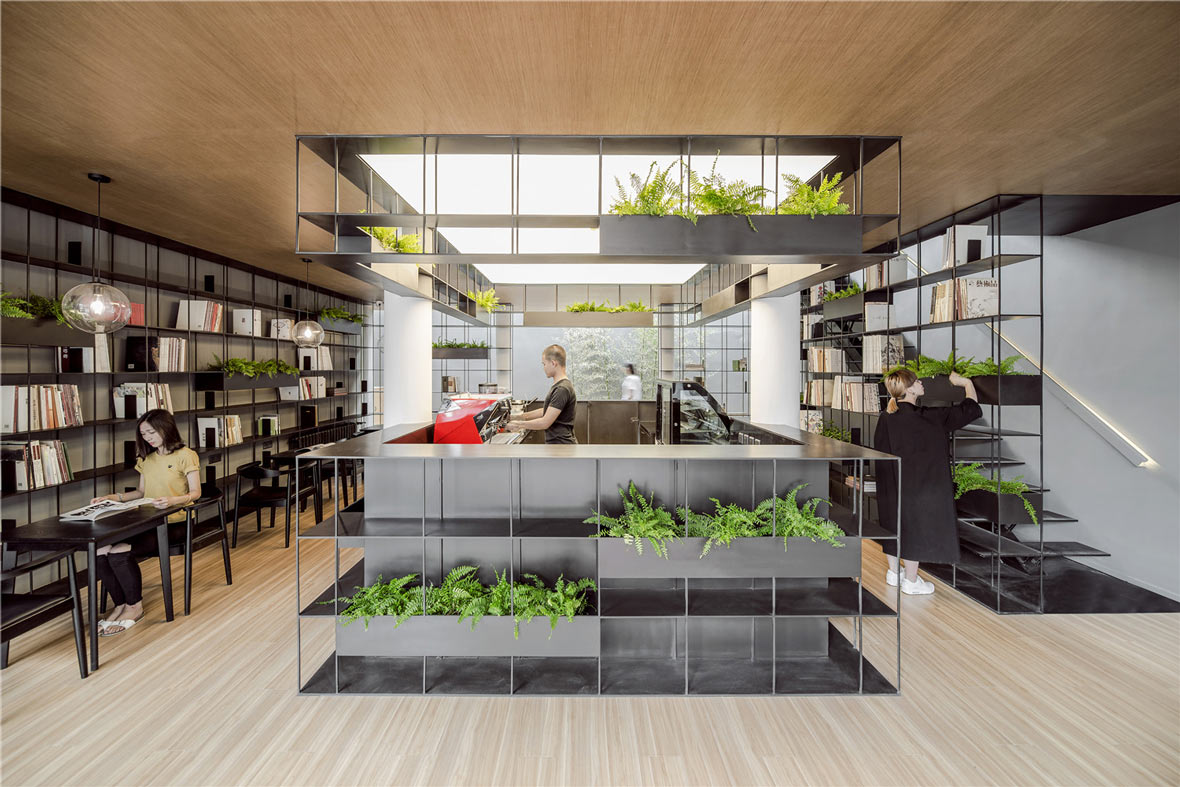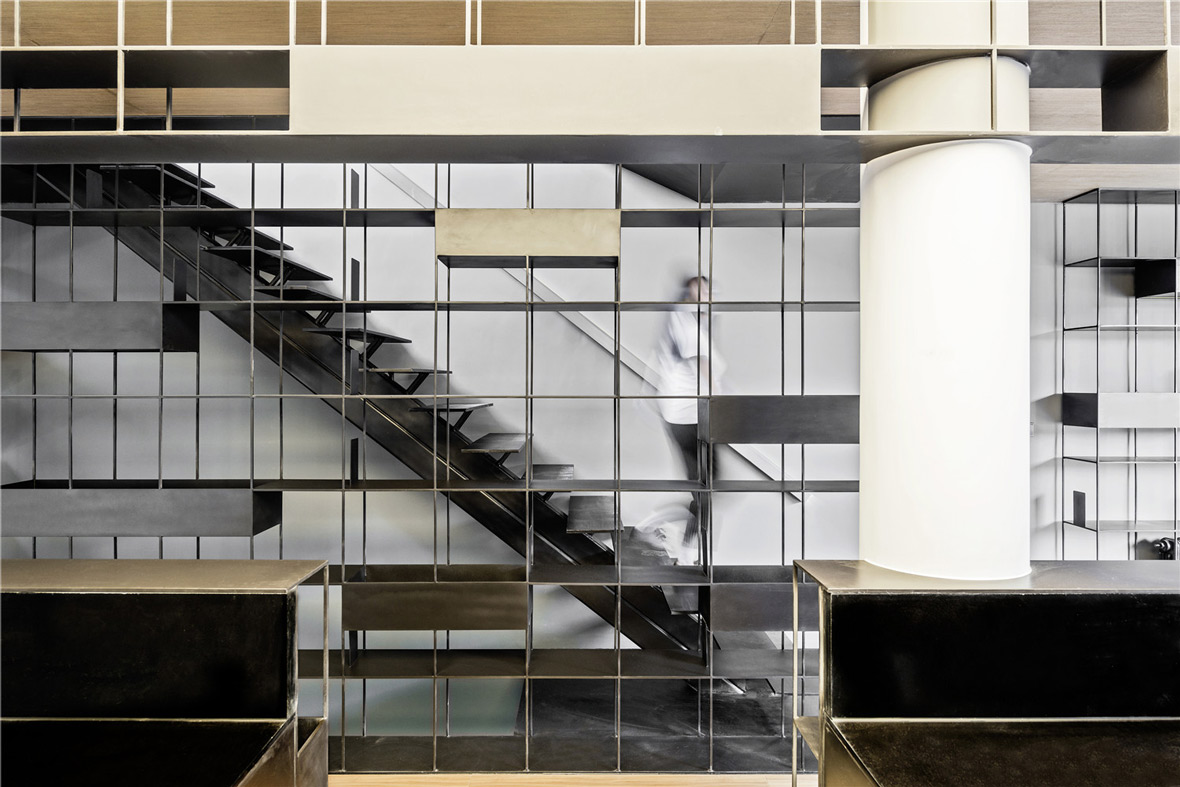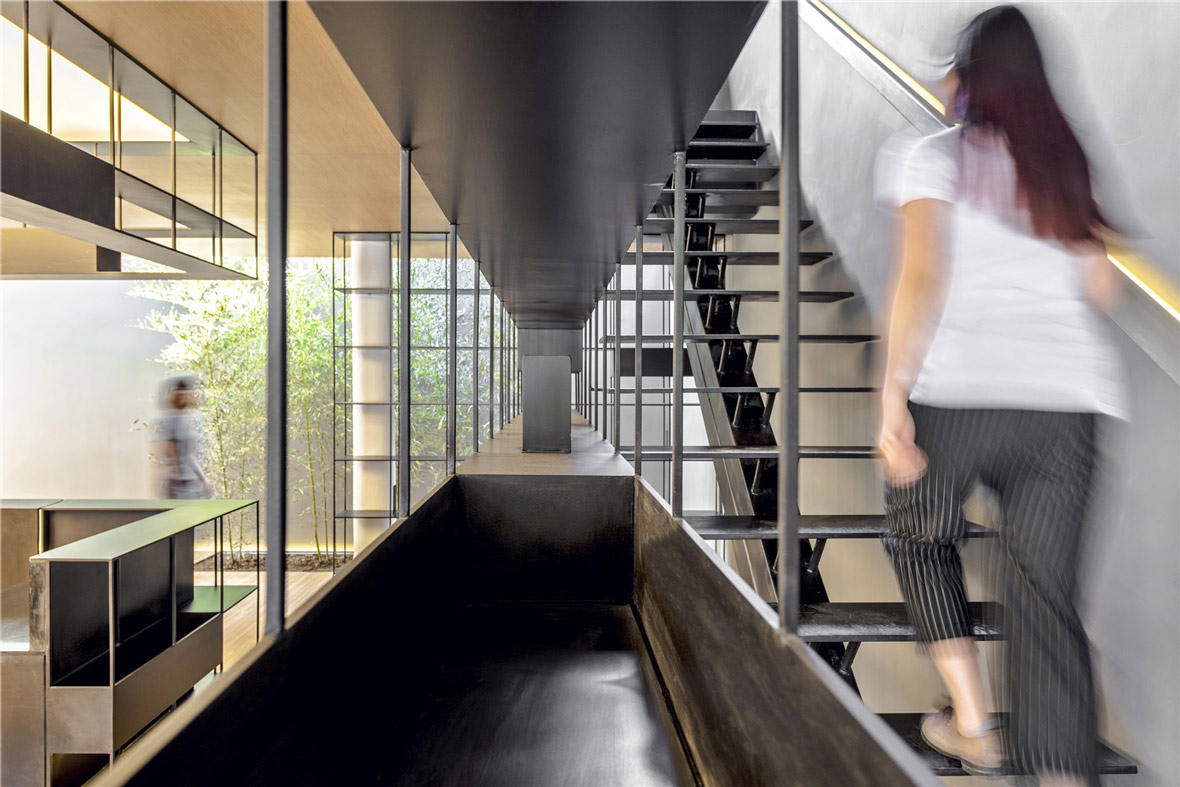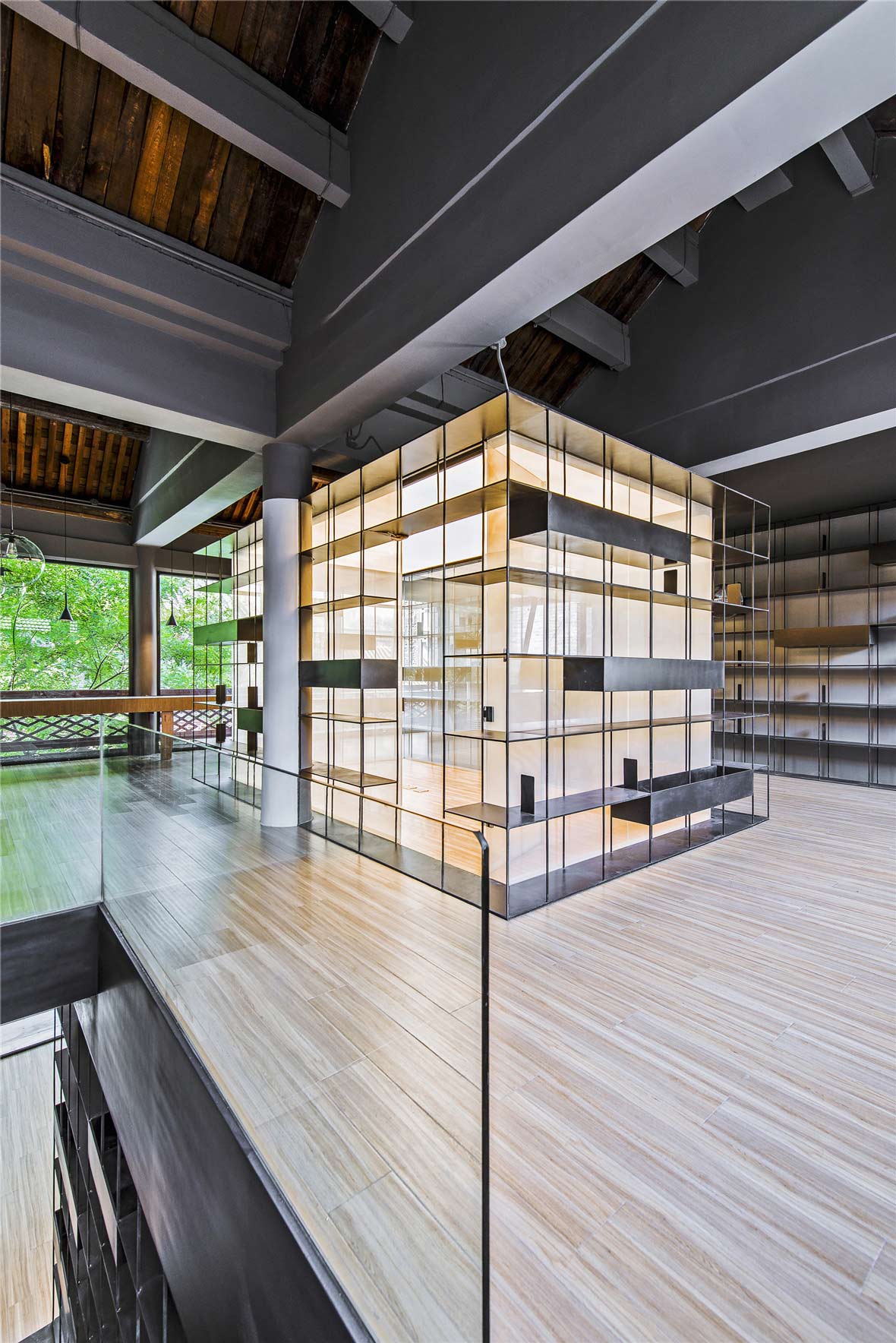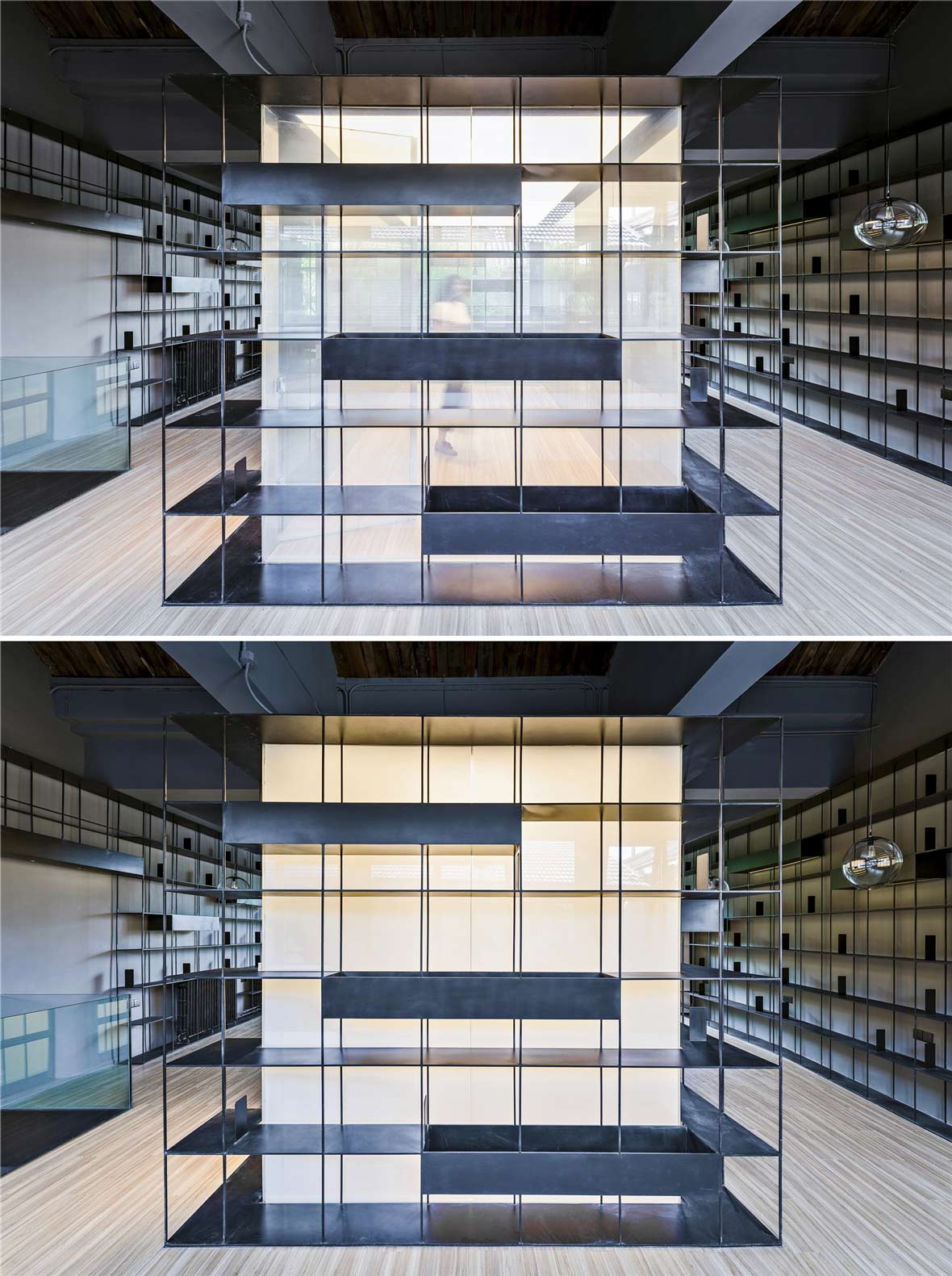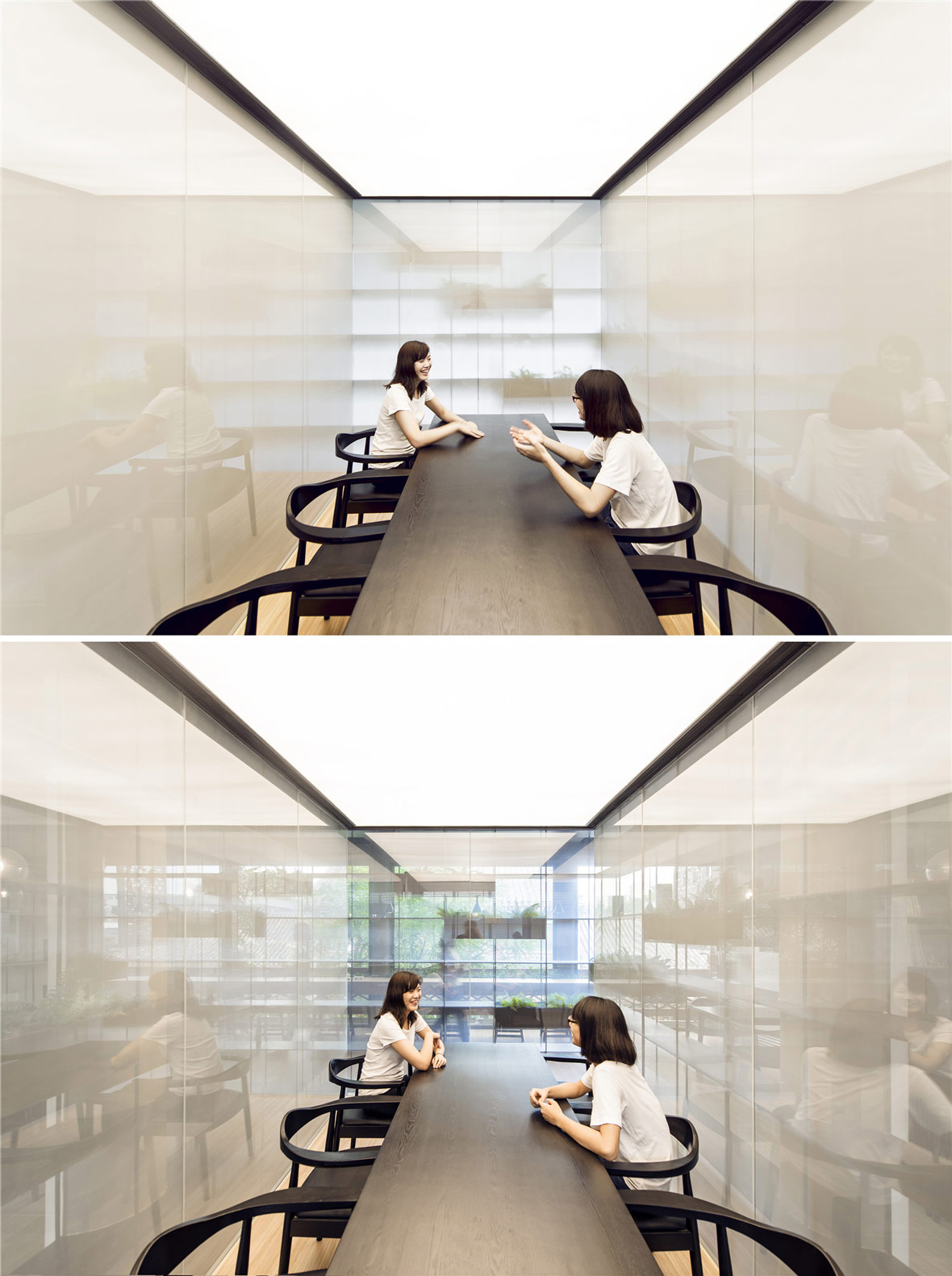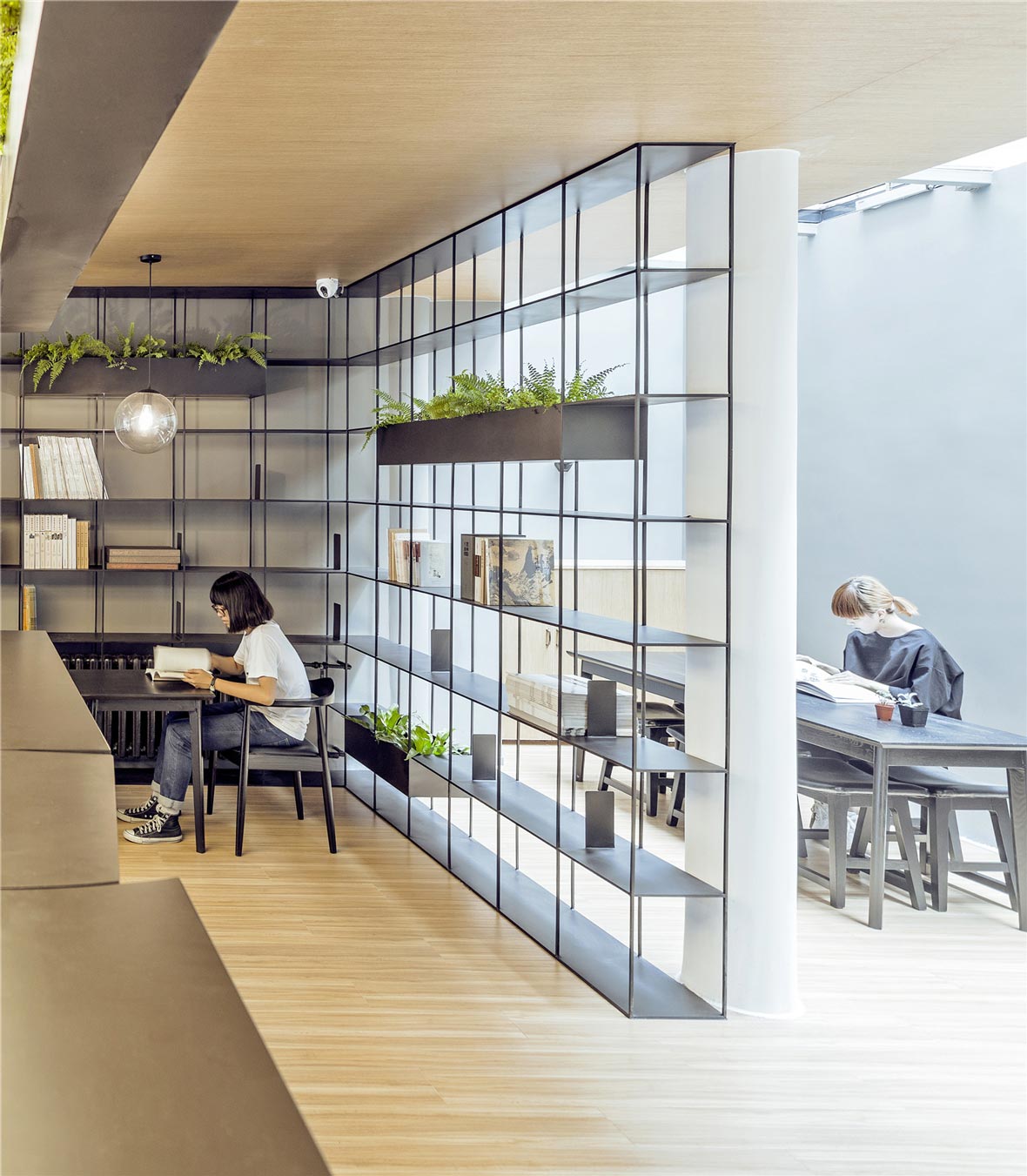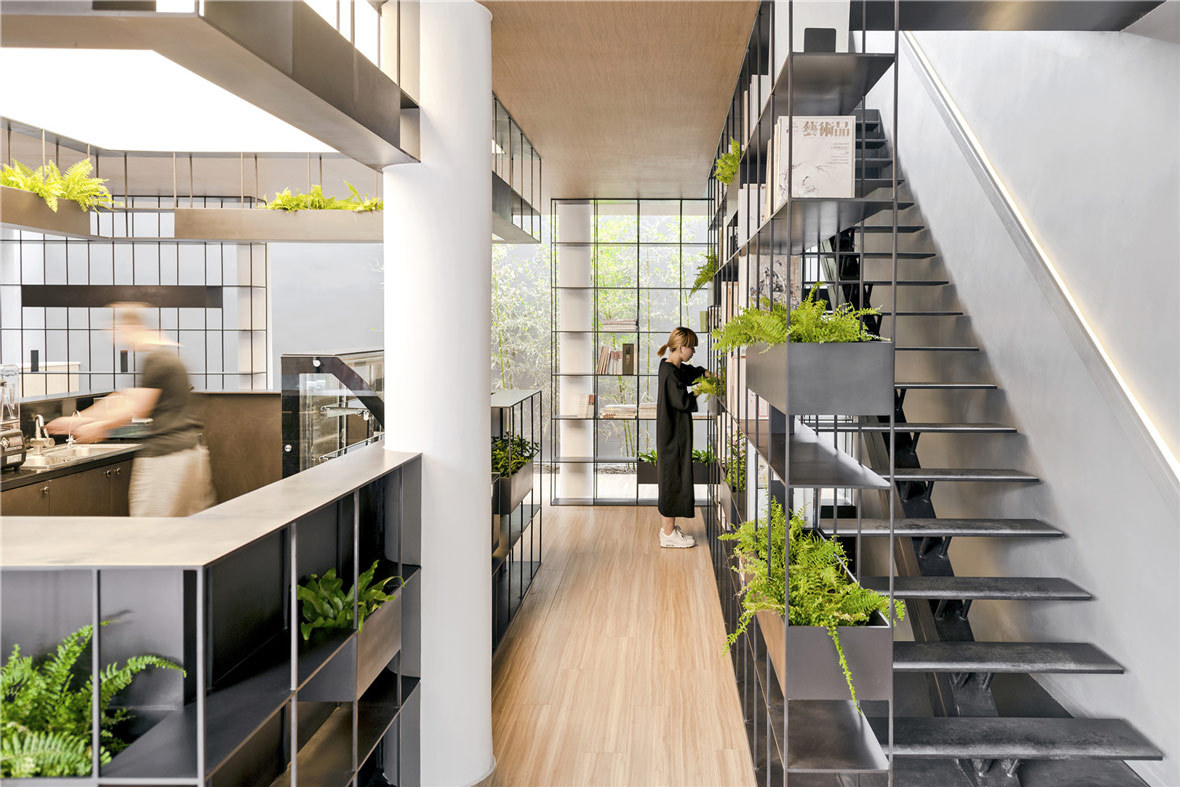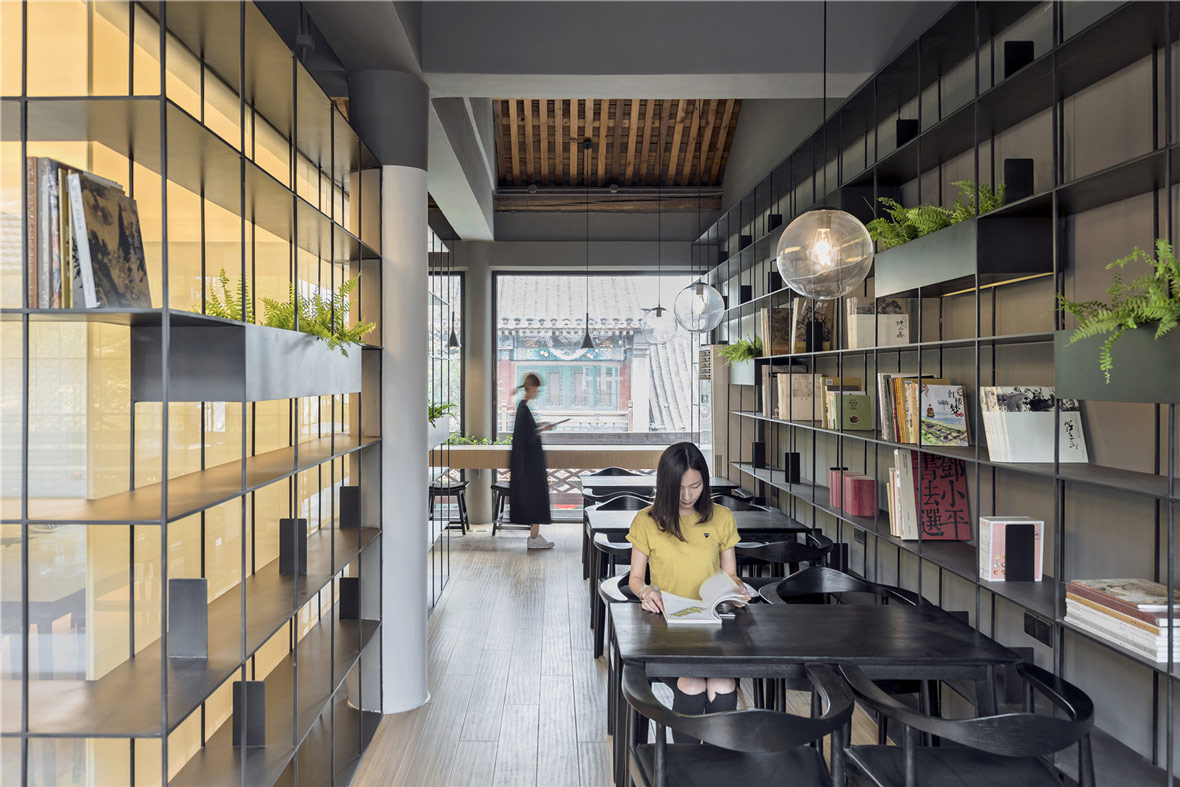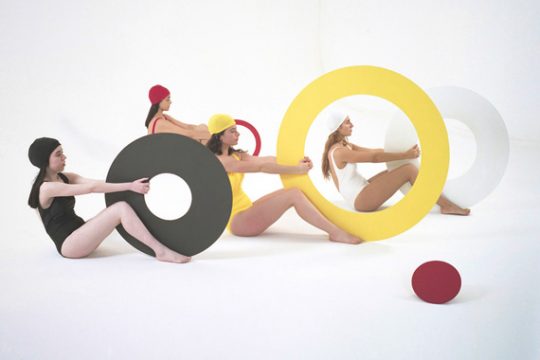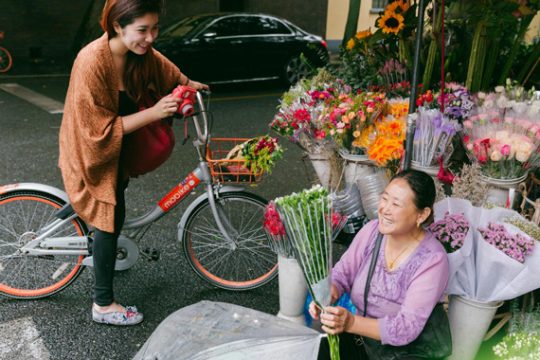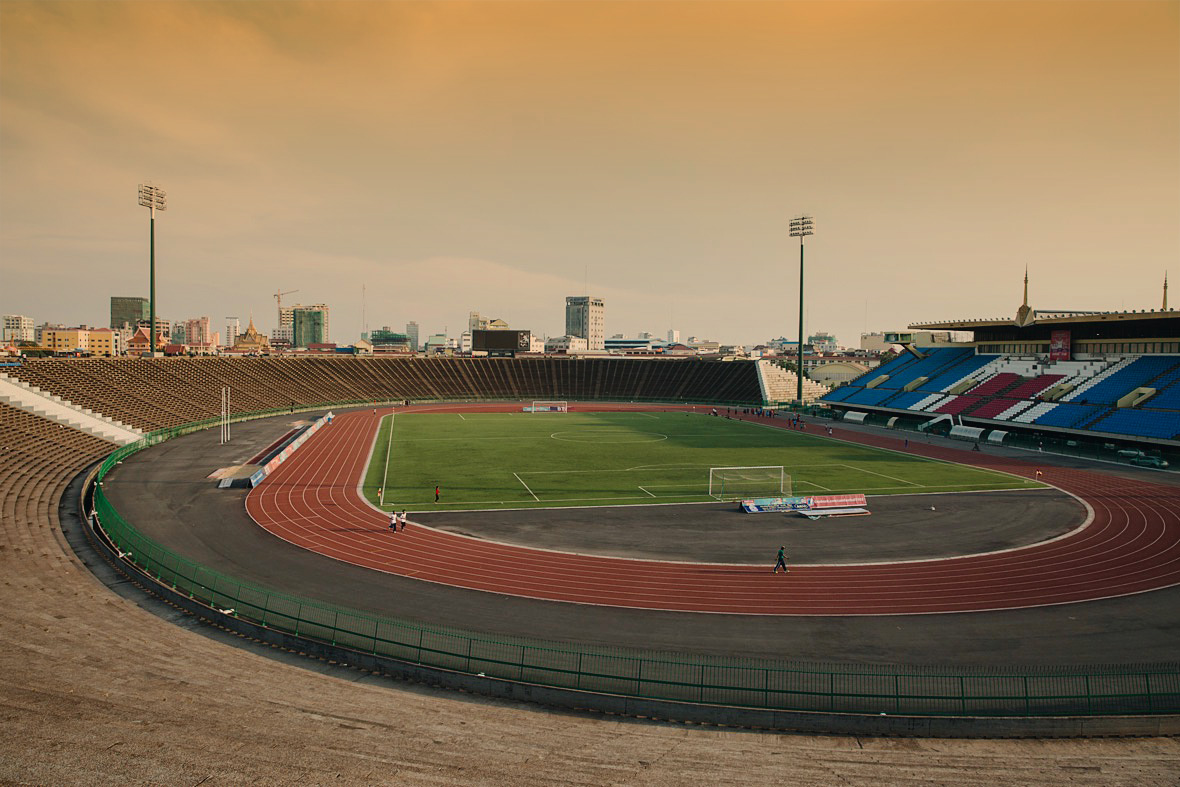
Born in Kampot, Cambodia, Vann Molyvann is undoubtedly the most prolific and famous architect of the New Khmer Architecture movement. After studying fine arts and architecture at the École Nationale Supérieure des Beaux-Arts in Paris, he would later return to a newly independent and socialist Cambodia in 1956. At the time, he was one of few architects in Cambodia who had any formal training, and soon after he was appointed a chief state architect. Vann Molyvann would go on to design many of the country’s most ambitious public projects, including Phnom Penh’s grand Olympic Sports Complex.
ដោយមានស្រុកកំណើតនៅខេត្តកំពត ប្រទេសកម្ពុជា លោក វណ្ណ ម៉ូលីវណ្ណ ប្រាកដណាស់ គឺជាស្ថាបត្យករដែលមានផលិតភាព និងមានភាពល្បីល្បាញជាទីបំផុតនៃចលនាស្ថាបត្យកម្មខ្មែរសម័យថ្មី។ បន្ទាប់ពីបានសិក្សាផ្នែកវិចិត្រសិល្បៈ និងស្ថាបត្យកម្មនៅសាលាវិចិត្រសិល្បៈជាតិជាន់ខ្ពស់(École Nationale Supérieure des Beaux-Arts)នៃទីក្រុងប៉ារីស គាត់បានវិលត្រឡប់មកកាន់ប្រទេសកម្ពុជាដែលទើបតែទទួលបានឯករាជ្យថ្មីៗ និងស្ថិតនៅក្នុងសម័យសង្គមនិយ័មវិញនៅក្នុងឆ្នាំ1956។ នៅពេលនោះ គាត់គឺជាស្ថាបត្យករមួយរូបនៅក្នុងចំណោមស្ថាបត្យករមួយចំនួនតូចនៅក្នុងប្រទេសកម្ពុជាដែលទទួលបានការបណ្តុះបណ្តាលជាផ្លូវការ ហើយបន្តិចក្រោយមក បន្ទាប់ពីគាត់ទទួលបានការតែងតាំងជាប្រធានស្ថាបត្យកម្មរដ្ឋ លោក វណ្ណ ម៉ូលីវណ្ណ បានបន្តធ្វើការរចនាគម្រោងសាធារណៈដ៏គួរឲ្យស្ងប់ស្ងែងជាទីបំផុតជាច្រើនកន្លែងនៅក្នុងប្រទេស ដែលរួមបញ្ចូលទាំងអគារពហុកីឡាដ្ឋានអូឡាំពិកដ៏ធំនៅទីក្រុងភ្នំពេញផងដែរ។
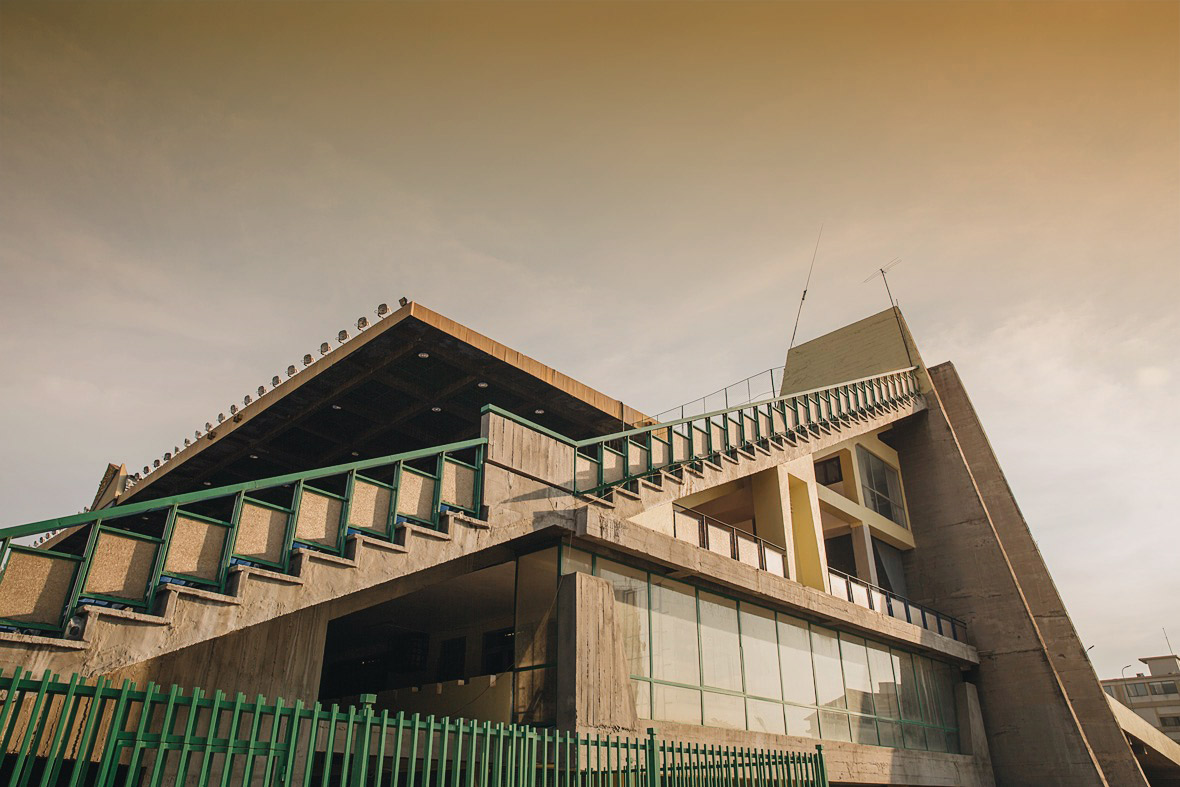
A sprawling and impressive structure that boasts a hydraulics system that was inspired by the moats and channels of Angkor Wat, the Olympic Stadium and its design signaled the start of a period of creativity and modernity in New Khmer architecture. During this time, Vann Molyvann would go on to design dozens of well-known public buildings and private homes in Phnom Penh, and elsewhere in Cambodia. Over the course of the next decade, as an architect and urban planner, he would redefine the way his country looked, while leaving his iconic imprint on the country’s capital.
រចនាសម្ព័ន្ធដែលលាតសន្ធឹង និងគួរឲ្យស្ងប់ស្ងែងមួយ ដែលកាន់កាប់ប្រព័ន្ធកម្លាំងទឹកមួយដែលត្រូវបានបំផុសគំនិតដោយគូទឹក និងបណ្តាញនានានៃប្រាសាទអង្គរវត្ត ពហុកីឡាដ្ឋានជាតិអូឡាពិក និងការរចនារបស់វាបានបង្ហាញអំពីចំណុចចាប់ផ្តើមនៃពេលវេលាមួយនៃគំនិតច្នៃប្រឌិត និងភាពទំនើបនៅក្នុងស្ថាបត្យកម្មខ្មែរជំនាន់ថ្មី។ ក្នុងអំឡុងពេលនេះ លោក វណ្ណ ម៉ូលីវណ្ណ នឹងបន្តធ្វើការរចនាអគារសាធារណៈ និងលំនៅដ្ឋានឯកជនដែលមានកេរ្តិ៍ឈ្មោះល្បីល្បាញរាប់សិបនៅភ្នំពេញ និងនៅកន្លែងផ្សេងៗទៀតនៅក្នុងប្រទេសកម្ពុជា។ ក្នុងរយៈពេលជាងមួយទសវត្សរ៍បន្ទាប់មកទៀត ក្នុងនាមជាស្ថាបត្យករ និងនគរូបនីយករ គាត់នឹងកំណត់ឡើងវិញនូវរូបរាងរបស់ប្រទេសរបស់គាត់ ខណៈពេលជាមួយគ្នានោះ គាត់បានបន្សល់ទុកស្នាដៃពិសេសៗរបស់គាត់នៅក្នុងរាជធានីនៃប្រទេសនេះ។

But following the military coup of 1970 in Cambodia, Vann Molyvann left his homeland and moved to Switzerland, eventually returning some two decades later in 1991. Today, although considered by many to be an integral part of the country’s modern architectural heritage, his extraordinary buildings are now increasingly being threatened by decay and recent chaotic urban planning. In 2008, for example, two of the architect’s greatest achievements, the National Theatre Preah Suramarit and the Council of Ministers, were unceremoniously demolished by developers.
ក្រោយរដ្ឋប្រហារយោធាឆ្នាំ1970 នៅក្នុងប្រទេសកម្ពុជា លោក វណ្ណ ម៉ូលីវណ្ណ បានចាកចេញពីស្រុកកំណើតរបស់គាត់ និងផ្លាស់ទៅរស់នៅប្រទេសស្វីស ហើយជាចុងក្រោយ គាត់បានត្រឡប់មកវិញក្នុងរយៈពេលជាងពីរទសវត្សរ៍ក្រោយមក គឺនៅក្នុងឆ្នាំ1991។ ទោះបីជាមនុស្សជាច្រើនបានចាត់ទុកគាត់ថាជាផ្នែកដ៏សំខាន់មួយនៃកេរ្តិ៍តំណែលផ្នែកស្ថាបត្យកម្មសម័យទំនើបរបស់ប្រទេសក៏ដោយ ក៏អគារវិសាមញ្ញរបស់គាត់កំពុងតែទទួលការគម្រាមកំហែងកាន់តែខ្លាំងឡើងដោយសារភាពពុកផុយ និងនគរូបនីយកម្មប្រកបដោយភាពច្របូលច្របល់នាពេលថ្មីៗនេះ។ ឧទាហរណ៍ នៅក្នុងឆ្នាំ2008 ស្នាដៃដ៏អស្ចារ្យបំផុតរបស់ស្ថាបត្យកររូបនេះ ចំនួនពីរ គឺសាលមហោស្រពជាតិព្រះសុរាម្រិតនិងទីស្តីការគណៈរដ្ឋមន្រ្តី ត្រូវបានបំផ្លាញចោលក្នុងពេលមួយប៉ព្រិចភ្នែកដោយអ្នកអភិវឌ្ឍ។
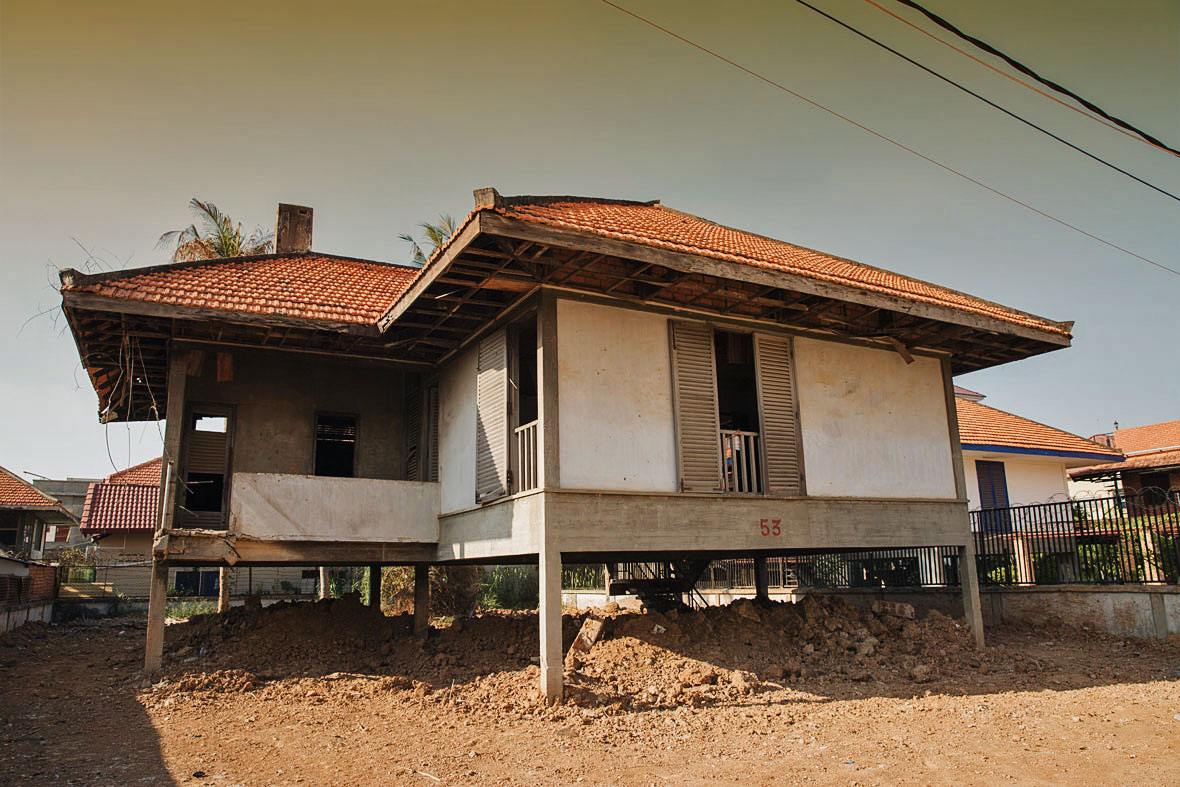
The Vann Molyvann Project was established by an international team of architects, architectural students, and researchers with the mission to document and preserve the works of Vann Molyvann, which include the Olympic National Sports Complex, the Chaktomuk Conference Hall, the former State Palace (now the Senate), the 100 Houses (an urban housing project for workers), the Institute of Foreign Languages, and many others. The group hopes to achieve this by raising awareness of Vann Molyvann’s work through exhibitions and publications, creating historical surveys of existing structures, and documenting his work for longevity.
គម្រោង វណ្ណ ម៉ូលីវណ្ណ ត្រូវបានបង្កើតឡើងដោយក្រុមស្ថាបត្យករអន្តរជាតិ និស្សិតផ្នែកស្ថាបត្យកម្ម និងអ្នកស្រាវជ្រាវទាំងឡាយ ដោយមានបេសកកម្មក្នុងការរៀបចំជាឯកសារ និងធ្វើការអភិរក្សស្នាដៃទាំងឡាយរបស់លោក វណ្ណ ម៉ូលីវណ្ណ ដែលរួមមាន អគារពហុកីឡាដ្ឋានជាតិអូឡាំពិក សាលសន្និសិទចតុមុខ អតីតព្រះបរមរាជវាំងរបស់រដ្ឋ (បច្ចុប្បន្ន គឺជាព្រឹទ្ធសភា) បុរី 100 ខ្នង (គម្រោងលំនៅដ្ឋាននៅទីប្រជុំជនសម្រាប់កម្មករ) វិទ្យាស្ថានភាសាបរទេស និងស្នាដៃផ្សេងៗជាច្រើនទៀត។ ក្រុមនេះសង្ឃឹមថានឹងសម្រេចការងារនេះបានតាមរយៈការពង្រឹងការយល់ដឹងអំពីស្នាដៃរបស់លោក វណ្ណ ម៉ូលីវណ្ណ តាមរយៈការតាំងពិព័ណ៌ និងការចុះផ្សាយនានា ការបង្កើតការស្ទង់មតិជាលក្ខណៈប្រវត្តិសាស្រ្តអំពីរចនាសម្ព័ន្ធដែលមានអត្ថិភាព និងចងក្រងស្នាដៃរបស់គាត់ជាឯកសារដើម្បីភាពស្ថិតស្ថេរជាយូរអង្វែង។

A few of his buildings continue to be used today, like the Institute of Foreign Languages (IFL) in Phnom Penh. The brilliant design of the college references some features of the hydraulic city of Angkor Wat, including its long elevated causeway and small reservoirs, while the lecture rooms and corridors were built using techniques to enhance the space’s cross-ventilation and natural lighting. Functional design considerations like these are highly representative of Vann Molyvann’s style, which can be described as combining Le Corbusier’s austere modernism with traditional Khmer design ideas.
អគារមួយចំនួនតូចរបស់គាត់ត្រូវបានគេបន្តប្រើប្រាស់នាពេលបច្ចុប្បន្ន ដូចជាវិទ្យាស្ថានភាសាបរទេស (IFL) នៅទីក្រុងភ្នំពេញ។ ការរចនាដ៏អស្ចារ្យនៃមហាវិទ្យាល័យដែលបញ្ជាក់អំពីលក្ខណៈពិសេសមួយចំនួននៃទីក្រុងប្រកបដោយកម្លាំងទឹក គឺអង្គរវត្ត ដែលរួមបញ្ចូលទាំងផ្លូវដើរដ៏វែង និងអាងស្តុកទឹកតូចៗដែលត្រូវបានស្ថាបនាឡើង ខណៈពេលដែលបន្ទប់បង្រៀន និងច្រករបៀងត្រូវបានសាងសង់ឡើងដោយប្រើប្រាស់បច្ចេកទេសដែលពង្រឹងការឆ្លងកាត់ចេញចូលនៃខ្យល់ និងពន្លឺធម្មជាតិទៅក្នុងទីធ្លា។ ការពិចារណាលើការរចនាដែលមានមុខងារជាច្រើនបែបនេះ គឺជាការតំណាងដ៏ខ្ពង់ខ្ពង់ដល់រចនាបថនានារបស់លោក វណ្ណ ម៉ូលីវណ្ណ ដែលអាចត្រូវបានពិពណ៌នាថាជាការរួមបញ្ចូលគ្នារវាងភាពទំនើបនិយមដ៏សាមញ្ញរបស់លោក លើ គ័កប៊ីហ្ស៊ើ( Le Corbusier) រួមជាមួយគំនិតរចនាបែបប្រពៃណីខ្មែរ។
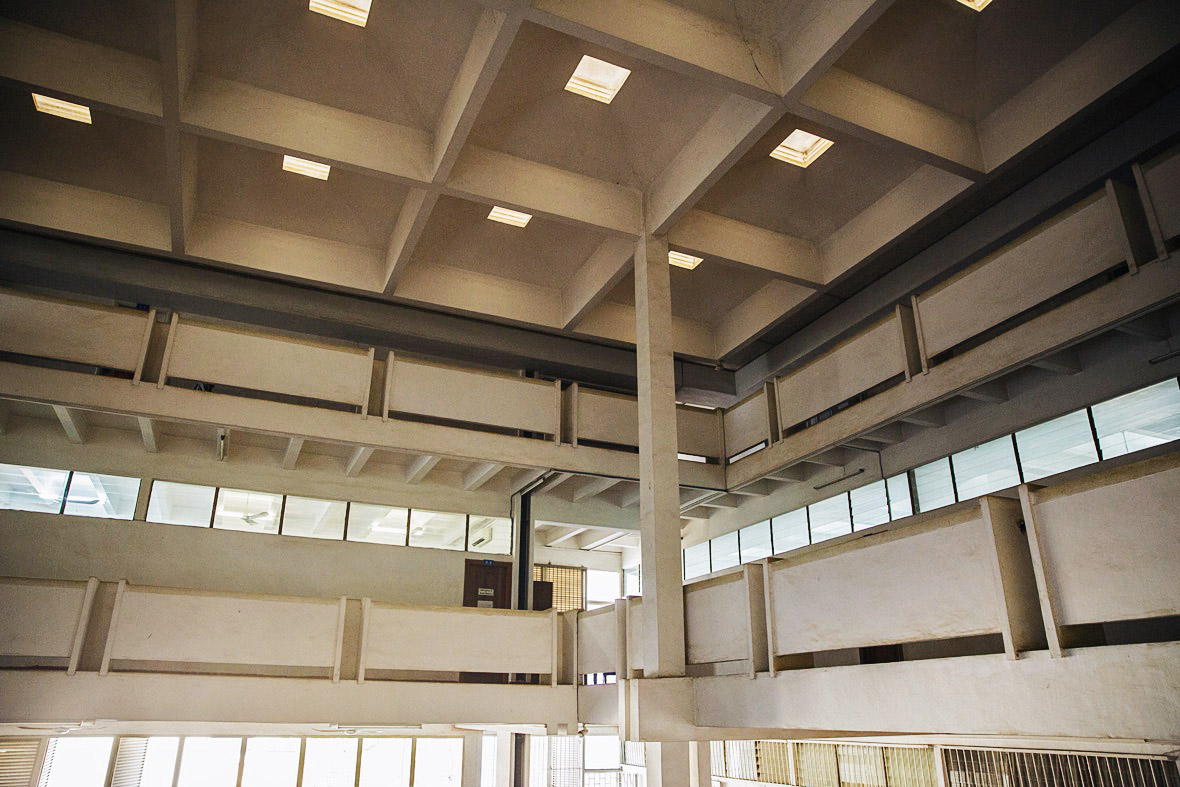
In the golden era of New Khmer architecture between the years 1957 and 1970, Vann Molyvann designed, or had a role in planning, nearly 100 projects. For many foreign architects who hadn’t previously been aware of contemporary indigenous architecture in Cambodia, they are often stunned by how innovative, avant-garde, and environmentally conscious his designs are. And yet despite enjoying a status as one of the finest modern architects to have emerged from Southeast Asia, Vann Molyvann’s buildings are now increasingly facing neglect and the very real threat of demolition by property developers and city planners. To learn more about The Vann Molyvann Project, be sure to visit their website; tours to view some of Vann Molyvann’s work in person in Phnom Penh can also be arranged with Khmer Architecture Tours.
នៅក្នុងយុគមាសនៃស្ថាបត្យកម្មខ្មែរសម័យថ្មី នៅចន្លោះឆ្នាំ 1957 និងឆ្នាំ 1970 លោក វណ្ណ ម៉ូលីវណ្ណ បានធ្វើការរចនា ឬមានតួនាទីមួយនៅក្នុងរៀបចំផែនការ ជិត 100 គម្រោង។ សម្រាប់ស្ថាបត្យករបរទេសជាច្រើនដែលមិនធ្លាប់ស្គាល់អំពីស្ថាបត្យកម្មក្នុងស្រុកបែបសហសម័យនៅក្នុងប្រទេសកម្ពុជាកាលពីមុន ពួកគេតែងតែមានការភ្ញាក់ផ្អើលចំពោះការរចនាដែលប្រកបដោយនវានុវត្តន៍ គំនិតថ្មីៗ និងមានភាពភ្ញាក់រឮកចំពោះបរិស្ថានដ៏ខ្លាំងក្លារបស់គាត់។ ថ្វីបើគាត់ទទួលបានឋានៈជាស្ថាបត្យករសម័យទំនើបដែលមានស្នាដៃល្អឥតខ្ចោះម្នាក់នៅក្នុងចំណោមស្ថាបត្យករដែលមានស្នាដៃល្អឥតខ្ចោះជាច្រើននាក់ដែលមានដើមកំណើតចេញពីទ្វីបអាស៊ីអាគ្នេយ៍ក៏ដោយ ក៏បច្ចុប្បន្ន អគាររបស់លោក វណ្ណ ម៉ូលីវណ្ណ កំពុងប្រឈមនឹងការមិនអើពើកាន់តែខ្លាំងឡើង និងការគម្រាមកំហែងដ៏ជាក់ស្តែងនៃការបំផ្លាញចោលដោយអ្នកអភិវឌ្ឍផ្នែកអចលនទ្រព្យ និងអ្នកធ្វើនគរូបនីយករ។ ដើម្បីសិក្សាបន្ថែមអំពីគម្រោង វណ្ណ ម៉ូលីវណ្ណ សូមប្រាកដថាលោកអ្នកបានចូលទៅកាន់គេហទំព័ររបស់ពួកគេ ការធ្វើដំណើរកម្សាន្តដើម្បីទស្សនាស្នាដៃមួយចំនួនរបស់លោក វណ្ណ ម៉ូលីវណ្ណ នៅក្នុងទីក្រុងភ្នំពេញដោយផ្ទាល់ អាចត្រូវបានរៀបចំឡើងជាមួយការធ្វើដំណើរកម្សាន្តរបស់ស្ថាបត្យករខ្មែរនានា។
